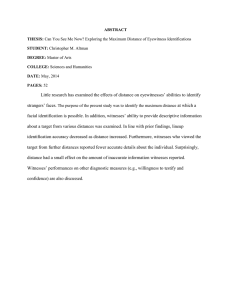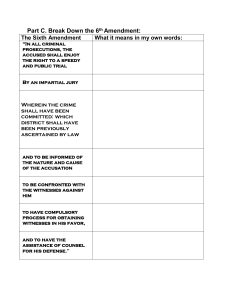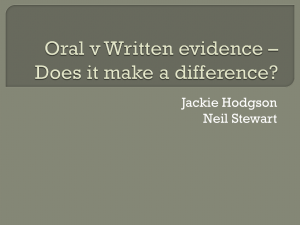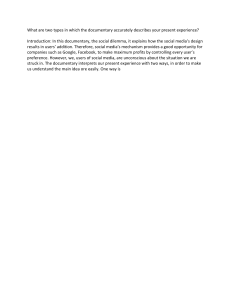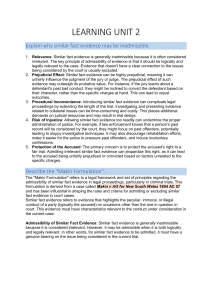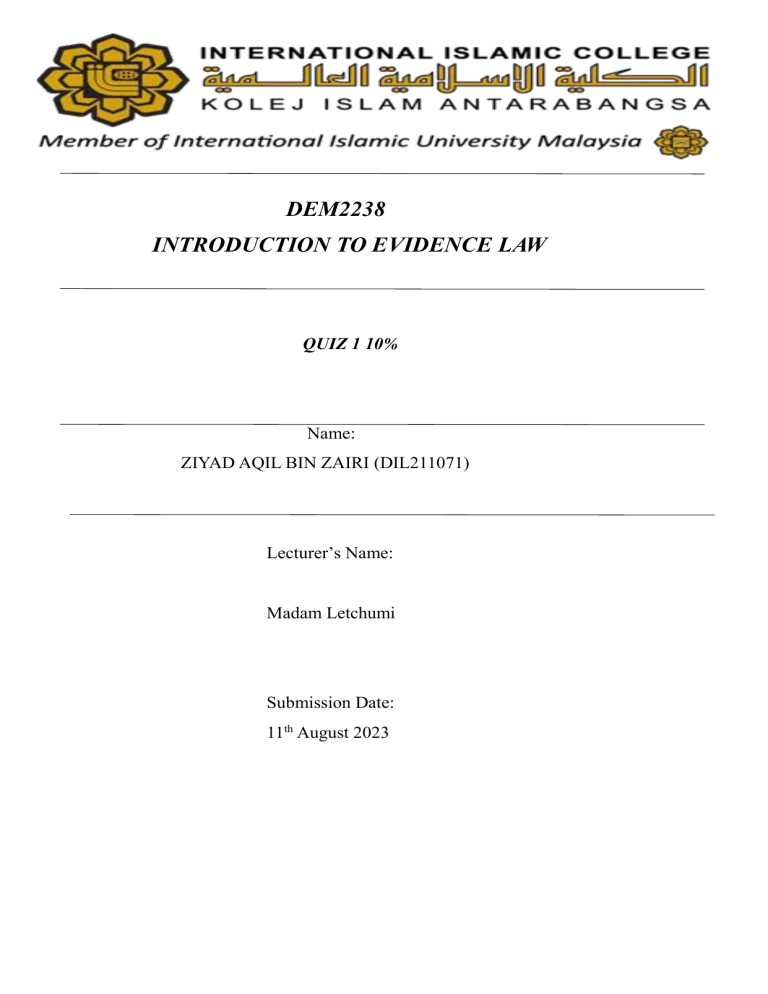
DEM2238 INTRODUCTION TO EVIDENCE LAW QUIZ 1 10% Name: ZIYAD AQIL BIN ZAIRI (DIL211071) Lecturer’s Name: Madam Letchumi Submission Date: 11th August 2023 Question and Answer: 1. What is the Latin origin of the word "evidence"? A) Eviventia 2.Which of the following is NOT a characteristic of evidence? b) Historical fiction 3.What term is used to describe statements made by witnesses in relation to matters of fact under inquiry? a) Oral evidence 4.According to the Evidence Act, which type of evidence includes statements made by witnesses and documents produced for inspection? b) Documentary evidence 5.What is the significance of Section 3 of the Evidence Act in relation to the definition of evidence? a) It provides an exhaustive definition of evidence. 6.What is the primary purpose of the Parol Evidence Rule in contract law? b) To exclude all forms of evidence other than written agreements. 7.Which type of evidence refers to physical objects presented in court to prove a fact? c) Real evidence 8.Which type of evidence is based on the circumstances surrounding a case and can be used to draw inferences? d) Circumstantial evidence 9.Under which section does CCTV Footage fall within the definition of a computer? c) Section 3 EA 1950 1|Page 10.What is the primary role of facts in an issue in a criminal case? b) To determine the credibility of witnesses. 11. According to Section 65 (1) (c) of the Act, secondary documentary evidence can be presented when the original document: c) Has been destroyed, lost, or cannot be produced for a legitimate reason. 12.Which principle of the law of evidence asserts that the law applicable to evidence is determined by the jurisdiction where the case is being tried? d) Lex Testamenti 13.In the context of Section 6 of the law of evidence, what does the term "gestae" refer to? b) Facts that are unrelated to the principal fact. 14.In the context of the Sunny Ang v PP [1967] 2 MLJ 195 case, what does "motive" refer to? b) The preparation made by the accused. 15.What criteria must evidence meet to be considered admissible, as highlighted in the case of PP v Dato’ Seri Anwar Ibrahim? a) Relevant, prejudicial, hearsay-free 16.According to the Evidence Act 1950, a fact is relevant if: d) It renders the existence of the fact in issue probable or improbable. 17.According to the Corroboration, why might the testimony of a criminal be impugned? d) Because they often have a history of giving false testimony. 18.What is the meaning of "hearsay" in the context of the law of evidence? b) Statements made out of court offered for the truth of the matter stated. 2|Page 19.Circumstances evidence, also known as collateral facts, are relevant because they: b) Provide additional context to the main evidence. 20.What distinction did the case PP v Haji Kassim (1971) make regarding evidence? b) All logically relevant evidence is admissible. 3|Page
